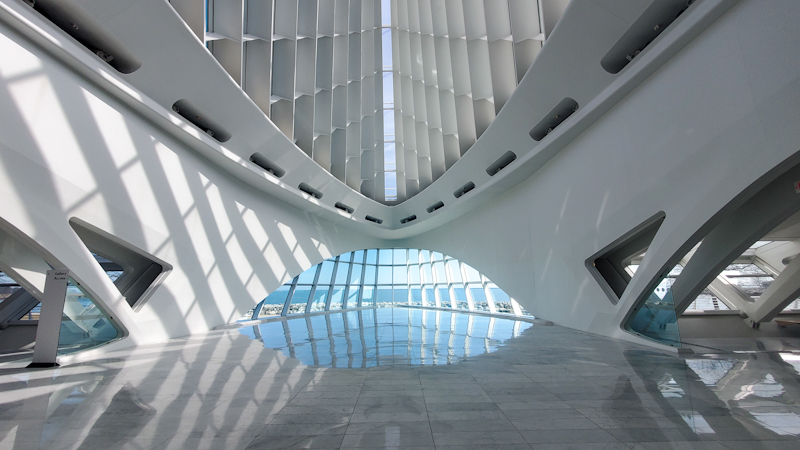

There is no denying that the brats & brews of Milwaukee, Wisconsin are pillars of local comfort culture. For generations, these have been lifeblood. Let there be no doubt that the gooey cheese curds, those lively old pubs, and whisky drive-thrus ooze with revered Midwest Americana flavor. We have industrious German, Polish, and Irish descendants – and a boisterous college crowd – to thank for it.
But things also evolve. As anyone who has been will tell you, the Harley Davidson Museum is a blast; a pilgrimage for many, in truth. And, of course, the old Milwaukee mansions and breweries are fascinating time capsules to see (I’m looking at you, Pabst). So, it should be no surprise to hear Milwaukee’s praises sung in tourism in recent years as a place to go see.
But what else? What to do beyond the brews and brats?
Vegan Brats
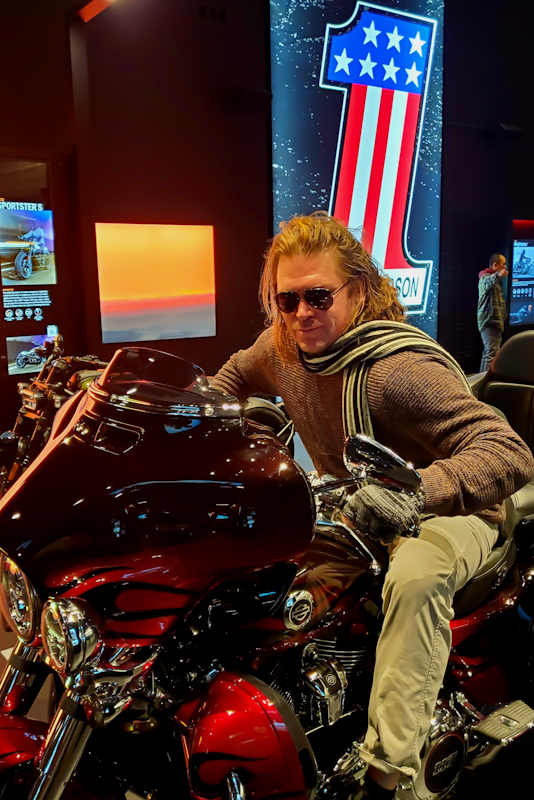

The irony in watching one of the city’s biggest pub crawls of the year from a window as I sampled vegan comfort food with water at Twisted Plants on E. Brady Street was not lost on me. But at 2 p.m. it was still amateur hour in my eyes.
Loading up with daily greens cleverly reinvented as indulgent Milwaukee classics was an adventure and a wise strategy to pace myself. Pre-gaming with menu faves like The Pineapple Express and The Big Lebowski hit some yummy high notes. Turns out, vegan munchies are not exactly obscure in this university town.
Even Milwaukee Brat House accommodates plant-based guests with a version of savory bratwurst, but that football-sized oven-baked pretzel and dips with a local flight was a perfect pairing, for me one afternoon.
3rd Street Market is a new way to explore some of Milwaukee’s foodie scene complete with fun and games all in one place. the pop-up food court of popular local vendors is located here along one of the most historic streets of Milwaukee, Wisconsin Avenue. This is where the very first Gimbal’s Department Store thrived and where Schlitz Brewery’s opulent gardens and the Majestic Theater entertained the masses back in the day. The theater is still active with its marvelous deco designs and artistry.
Gaelic Flair
Local patrons flowed steadily through downtown favorite, County Clare Public House at happy hour one evening. I was awash in genuine Gaelic flair as I sat perched at the lively bar with a friend and a pint. With the irresistible charm of the barkeeps’ brogue, lively traditional music, and friendly atmosphere, there was a real fun Galway vibe, just short of a jig.
The dining area was a full house of loyal locals. County Clare’s fare is itself authentically Irish; elevated well beyond ordinary pub food. The menu had notable offerings for the plant-based with no need to have to forgo classics like Shepherd’s Pie or Colcannon Poppers if that’s your jam. Reservations are recommended, as is remembering to drink Wisconsinably.
Kicking Back at Saint Kate’s
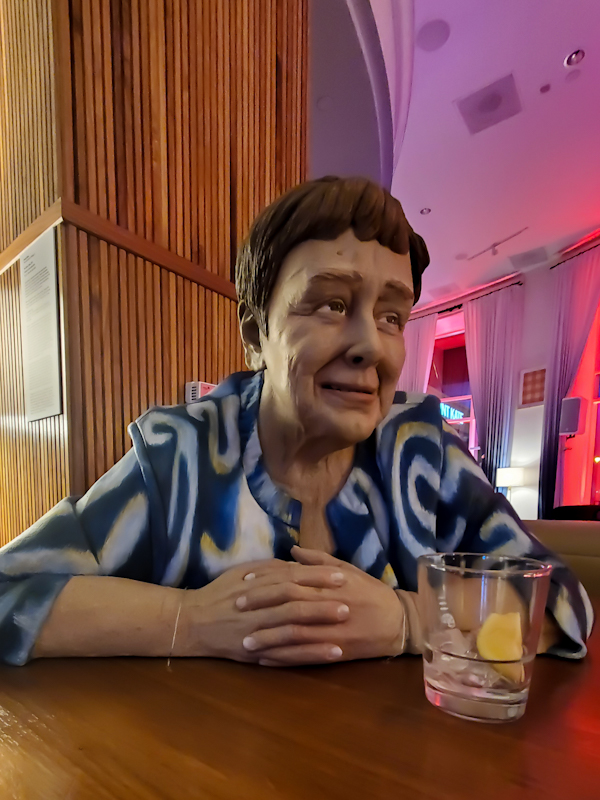

It is a widely diverse landscape of hotels in Milwaukee. There is no shortage of grand old lodging like at fancy Pfister. But in shopping around, it seems there is always a new opening tending towards sophisticated modern bohemian and sometimes rustic tastes. These specific styles speak to the diverse demographics Milwaukee has been increasingly welcoming. I opted for the Saint Kate Arts Hotel.
The unique, vibrant space is touted as a boutique hotel but offers more than one might expect, including in the realm of creative arts events and music. It has its own little universe going on. Ideally located in the Theater District, the hotel offers galleries with works from artists in residence. There is an atmospheric and cushy live music lounge by night that garnered a good after-dinner crowd. Saint Kate’s dedicated restaurant, ARIA, and its personal-pan pizzeria had a considerable flurry of activity as well. The open, spacious lobby had ample ambient nooks and a roomy, relaxed flow.
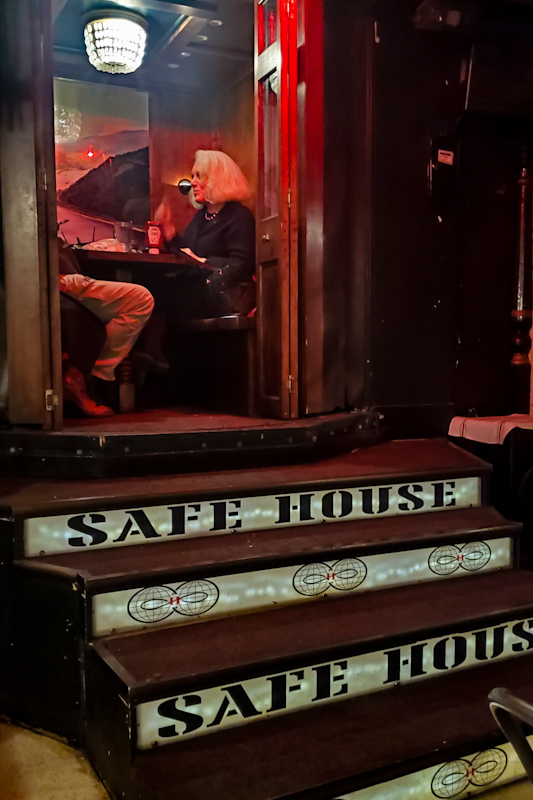

After being greeted by Saint Kate’s outgoing staff with a welcome glass of bubbly upon arrival, they checked me in expeditiously. I enjoyed their smart down-to-earth friendliness, which you have to appreciate these days. The modern-contempo interiors were a blend of sophisticated and trendy. And yes, I suppose one could indeed say artsy!
The deluxe room was impressively spacious. Quirky amenities and a record player gave a playful element to the comfortable, quiet space. My night view of the clock tower lent a particularly nice touch. I looked forward to returning in between outings and at night.
One misty night on the way back to Saint Kate’s from Onesto for some chill upscale modern Italian and vino, we stumbled on SafeHouse quite by accident. It’s somewhere around the corner from the hotel. At some point, somehow, we wound up in a small holding area where we were pressed for a password. We had no clue. And the interrogation was a little tense there before it let up and we were directed to a secret door that landed us in a dark corridor that led us to a world of mystery, hidden rooms, covert dining, and spy games. Highly recommended if you can find it.
Glassnote
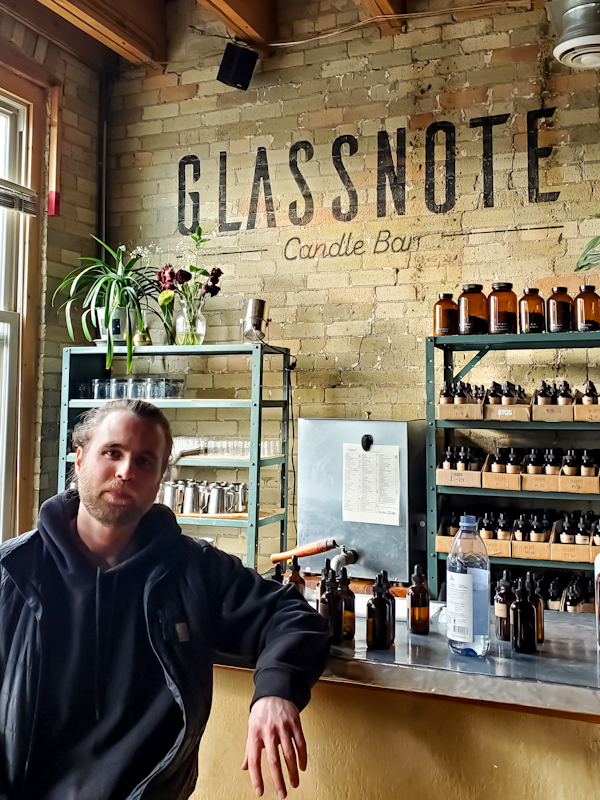

At the top of the list of cool new finds in Milwaukee is Glassnote Candle Bar, created by one-of-a-kind entrepreneur Kevin Goudzwaard. An ingenious vision that incorporates cocktails, fun, and ethical creativity, Glassnote is a personal sensory experience for guests. With a vintage feel throughout, the décor of the space is handpicked, recreated, repurposed, or recycled featuring a 16-foot zinc bar, rustic original Cream City brick, glassware, and maple flooring. There was something endearingly romantic about the place.
Goudzwaard has taken his Milwaukee Candle Factory of natural, hand-poured products and essentially created a space for lounging, unwinding, and exploring the artistry of soy wax candle making and fragrance building for all. With speakeasy vibes abound guests are guided into a creative groove, crafting memorable times, unwinding with cocktails, and leaving with unique handmade keepsakes.
During a tour with Goudzwaard inside the 19th-century house, the young entrepreneur was illuminating; a vessel of inspiration yearning to be ignited. And I sense he’s got the artistic vision to do it. This is the kind of establishment you’d expect to see in trendy Brooklyn, for sure. And I wouldn’t be surprised if I did one day. Until then, you’ll find him on 2nd Street in Milwaukee. Reservations are strongly suggested.
St. Joan of the MKE?
Milwaukee has had many nicknames, one being the City of Steeples because of the European immigrant influence on architecture, including houses of worship which once stood out in the city’s aerial views. It was interesting to learn that the oldest structure in existence in the U.S. today, still functioning as intended is actually located in the heart of Milwaukee.
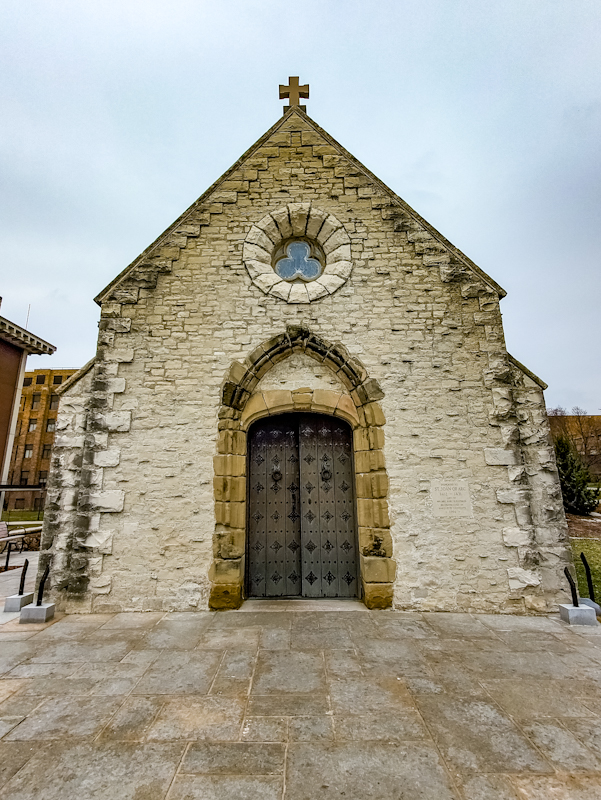

While not exactly inconspicuous, the modest-sized stone chapel stands nonchalantly in a little nook on the campus of the city’s Marquette University. It is alluring and unique, and it dates back to 1420. Historians and scholars agree that this is indeed the place where Joan of Arc would go to pray before her notorious 15th-century battles.
It’s true. This Gothic church once known as St. Martin de Seysseul existed 500 years ago …in France. When the architectural relic was discovered in disrepair in the Rhone Valley in 1920 and then authenticated, Gertrude Gavin, daughter of a wealthy railroad magnate, had the chapel moved to her New York estate where its meticulously numbered stones were reset to its original structure.
With blessings from the Vatican, Gavin renamed the medieval structure The Chapel of Joan of Arc in honor of the canonized French heroin. Years later, Gavin gifted the chapel to the Jesuit University where the landmark continues regular holy services.
Inside, the atmosphere was ambient and calming. Behind the altar, the diffused light distributed itself softly through the recreated stained glass windows. The numbers on the restored stones are still legible here and there. The sacred art on its walls is sparse yet powerful. And towards the far left corner, near the namesake statue, was St. Joan’s fabled prayer stone which is fabled to always be cooler to the touch than any other. Go have a feel for yourself.
Lakefront
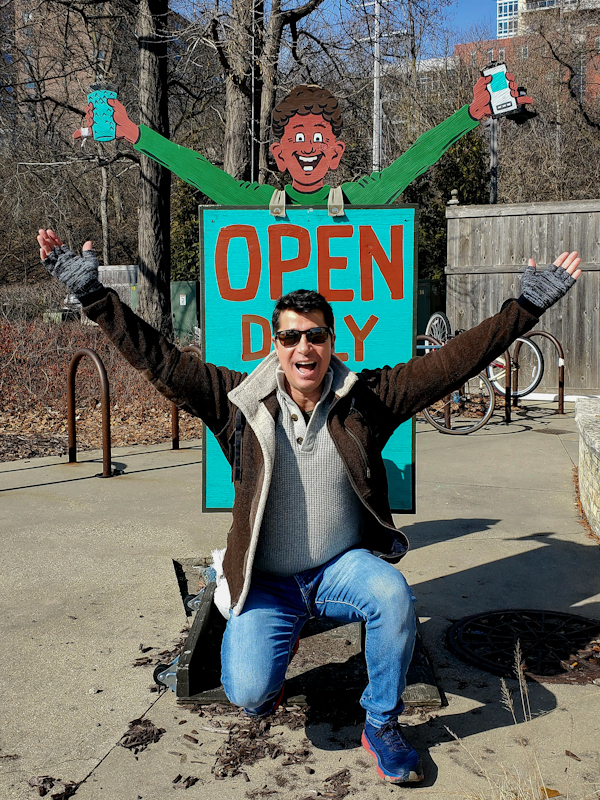

No trip to Milwaukee is complete without a stroll along the Milwaukee Bay of Lake Michigan. Multiple parks, a marina, and even a beach stretch along its wide mouth offering an array of warm weather activities unless you’re partaking in the famous local annual Polar Bear Plunge.
One brisk morning, a friend and I stopped into an already bustling Colectivo Café at historic Milwaukee River Flushing Station, Lakefront beside Atwater Park. With a strong presence as a source of support for the vibrant arts scene and a strong desire for an optimal brew, the café has a long practice of fair trade and is a popular spot for bakery and breakfast items year-round.
Staying warm with our to-go cups while strolling the shore en route to the Milwaukee Art Museum, we could see the famous Burke Brise Soleil aka the museum’s wings moving in the distance. They look a bit like The Oculus in downtown NYC. Unprecedented in American architecture, the wings, expand and contract three times a day. The Burke Brise Soleil rests atop the Museum’s vaulted, glass-enclosed Windhover Hall, which is a captivating vision from the inside, too. It’s gorgeous. It has a wingspan comparable to that of a Boeing 747-400 with ultrasonic wind sensors that automatically close the wings if the wind speed reaches 23 mph or greater.
With over 25,000 pieces to explore in exhibits from classical to contemporary to modern to folk to interactive multimedia and something always going on, it’s a wonderful place to spend a day or two.
A Romanesque Gem
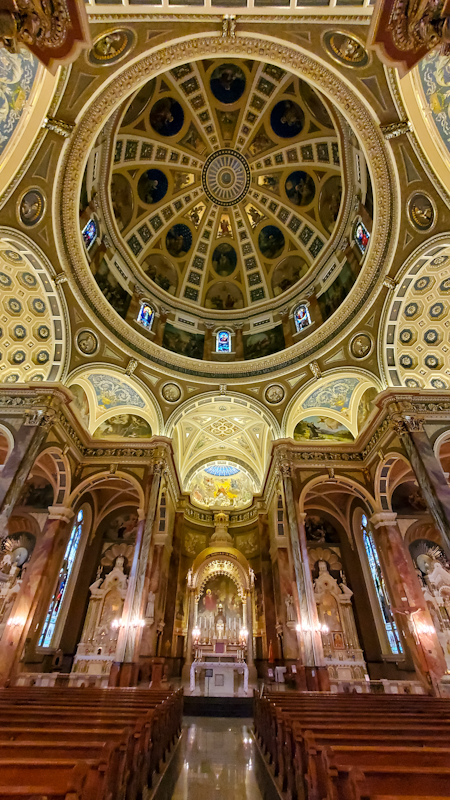

Like it was straight out of Rome, beautiful Saint Josaphat’s Basilica rises into the sky of Milwaukee’s historic South Side. It’s an off-the-beaten-path architectural gem that needs to be seen to be appreciated. In fact, it was modeled after the Vatican’s own St. Peter’s with the same cruciform floor plan and huge central green copper dome synonymous with St. Peter’s. For the middle of Milwaukee, the grandeur was a lot more than I was expecting.
Commissioned in the late 1800s as an off-shoot of a small Polish church, the Neo-Rennaissance structure was designed by world-renowned architect, Erhard Brielmaier. It became a social and spiritual center for the masses of Polish immigrants after the Civil War. It was the third basilica in the U.S., earned a spot on the National Register of Historic Places, and continues to be enormously active in the community under the administration of the Franciscan Friars.
There is much to explore on a self-tour and at the Visitor’s Center. But there is a wealth of bits to be garnered on a guided tour, including an otherwise off-limits bird’s eye view. I found myself surrounded by meticulously detailed ornate interiors everywhere. It was not hard to be drawn to the glow of the Austrian stained glass, the commanding Corinthian columns up to the arches, the gorgeous murals, and the overpowering opulence. It commanded a meditative quiet. I found myself lying in a pew, following the elaborate architectural lines around the soaring dome, absorbing it all.
And by the way: Schlemiel! Schlimazel! I couldn’t write about Milwaukee without including a Laverne & Shirley reference.

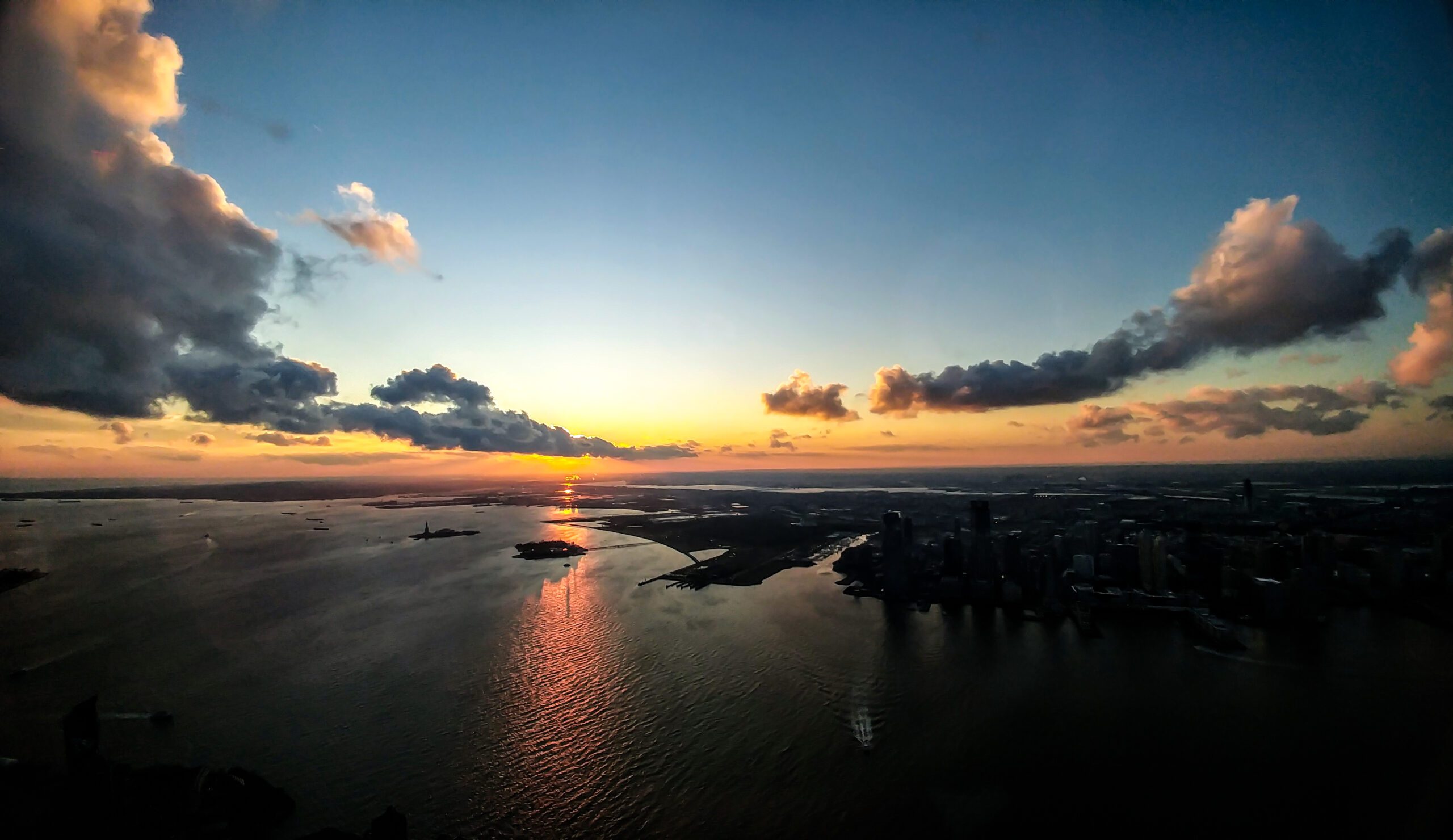
Wow! Leave it to you to find such cool stuff 😎
Who would have thought a chapel from 1420 is located in Wisconsin?? How crazy! Def need to check this out and the Harley museum!!! Great read!
It was pretty exciting for the Midwest haha, seriously, I’d go back.